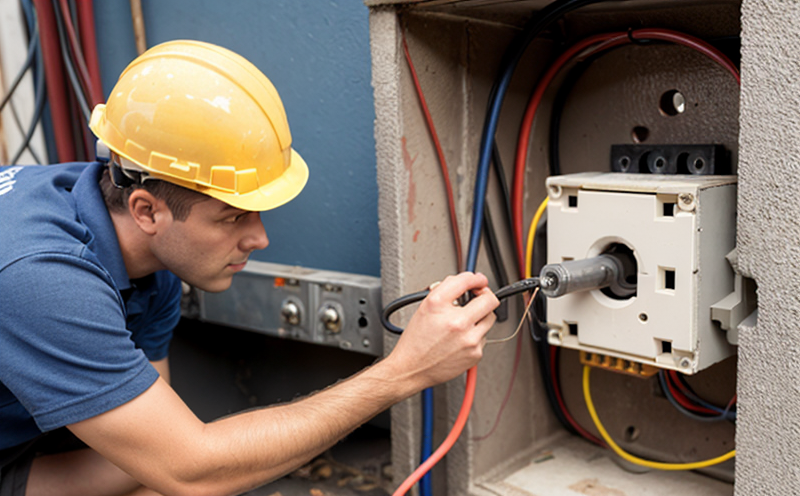Electrical Continuity Inspection
The integrity of electrical systems is paramount in ensuring safety and reliability. Electrical continuity inspection serves to verify that there are no breaks or gaps within conductive paths, which can lead to malfunctions or hazards. This service ensures that all parts of an electrical circuit are connected as they should be, allowing for efficient current flow without resistance.
In the context of Electrical and Electronic Systems Inspection, continuous monitoring is essential because even minor interruptions in continuity can result in significant operational issues. For instance, in industrial settings where machinery relies heavily on electrical systems, a disruption could halt production lines or cause costly downtime.
The process involves the use of specialized equipment capable of detecting low-resistance paths between points within a circuit. Instruments such as multimeters and conductance testers are employed to measure the resistance across specific segments of the system. If the measured value exceeds acceptable limits, it indicates that there is an issue with continuity which needs addressing.
Acceptance criteria for electrical continuity inspections vary depending on industry standards but generally include achieving a specified maximum allowable resistance threshold (typically below 10 milliohms). Compliance with these standards ensures not only functional integrity but also contributes towards broader quality assurance goals within organizations.
For those involved in research and development (R&D), this service provides critical insights into how changes made during innovation stages might affect overall system performance. Quality managers must ensure that all components meet stringent specifications before being integrated into larger assemblies or deployed into real-world applications.
Why It Matters
The importance of electrical continuity cannot be overstated, especially in environments where safety and efficiency are paramount. Ensuring continuous connections reduces the risk of accidents caused by unexpected power surges or short circuits due to poor wiring practices. From a business perspective, maintaining reliable performance can translate into increased productivity and reduced maintenance costs.
Compliance officers play a crucial role in ensuring that all electrical installations adhere to relevant regulations set forth by bodies like OSHA (Occupational Safety & Health Administration) and IEEE (Institute of Electrical and Electronics Engineers). By conducting regular inspections, they help prevent violations and ensure that facilities operate within safe parameters.
R&D engineers benefit greatly from accurate continuity checks during prototype development stages. It allows them to identify potential weaknesses early on so corrective actions can be taken before full-scale production begins. This proactive approach fosters innovation while minimizing risks associated with unforeseen failures later down the line.
Industry Applications
| Application Area | Description |
|---|---|
| Data Centers | Ensuring uninterrupted power supply to servers and other critical equipment. Helps prevent data loss and downtime. |
| Aerospace & Defense | Maintaining reliable communication systems aboard aircraft and spacecraft. |
| Railways | Guaranteeing safe operation of signaling systems that control train movements. |
| Automotive Manufacturing | Verifying proper functioning of electrical components used in vehicle assembly lines. |
In these sectors, maintaining continuous electrical connections is vital for ensuring optimal performance and operational safety. Regular inspections enable early detection of issues that could otherwise lead to catastrophic failures.
Environmental and Sustainability Contributions
- Promotes efficient use of energy resources by reducing waste through reliable operation of devices.
- Encourages longer lifespan for electrical products, thereby decreasing electronic waste generation.
- Supports cleaner environments by minimizing the likelihood of accidental fires or explosions resulting from faulty circuits.
By adhering to stringent continuity inspection protocols, organizations contribute positively towards sustainable practices. This not only benefits individual enterprises but also supports global efforts aimed at fostering a greener future.





